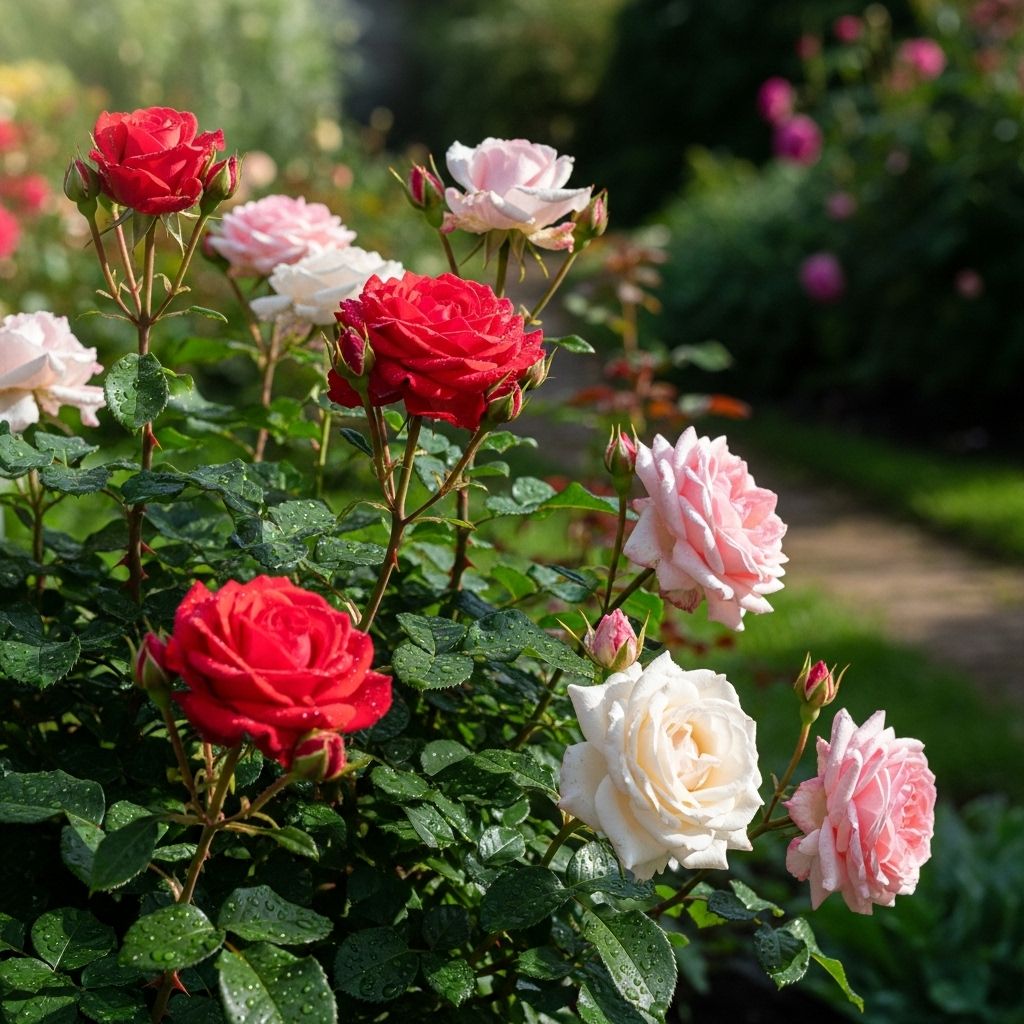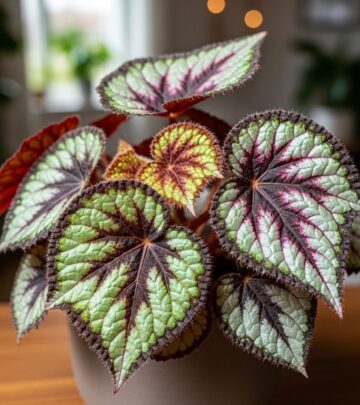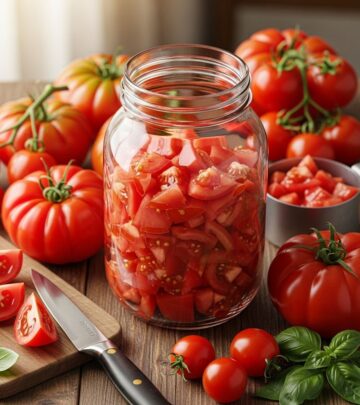Are Roses Perennials? 6 Care Tips For Year-Round Blooms
Discover whether roses are annual, biennial, or perennial and how their life cycle shapes your garden for years to come.

Image: HearthJunction Design Team
Are Roses Considered Annual, Biennial, or Perennial Shrubs?
Roses have enchanted gardeners for centuries, admired for their enduring beauty, myriad forms, and luxurious scents. But if you’re planning to add these floriferous shrubs to your landscape, an essential question arises: Are roses annuals, biennials, or perennials? Understanding the life cycle of roses helps you make the best decisions for your garden’s longevity and success.
Contents
- Annuals, Biennials, and Perennials: Key Differences
- Are Roses Annual or Perennial?
- The Life Cycle of Roses
- Rose Hardiness and Longevity
- Roses in Cold Climates
- How to Help Roses Thrive Year After Year
- Frequently Asked Questions
Annuals, Biennials, and Perennials: Key Differences
Before diving into the specifics of roses, let’s briefly review the differences between annuals, biennials, and perennials. These terms describe how long a plant lives and how it completes its life cycle:
- Annuals: Complete their entire life cycle—from seed to flower to seed—within a single growing season. After blooming and setting seed, annuals die. Popular examples include zinnias, marigolds, and cosmos.
- Biennials: Require two years to complete their life cycle. In the first year, they grow leaves, stems, and roots (the vegetative phase); in the second year, they flower, set seed, and then die. Common biennials include foxgloves and hollyhocks.
- Perennials: Live for three or more years, blooming and producing seeds over multiple seasons. Unlike annuals and biennials, their root structures persist underground or as woody stems above ground, allowing them to return year after year.
Are Roses Annual or Perennial?
All roses are perennials. These treasured shrubs steadfastly return each year, gracing gardens with spectacular displays for decades or even centuries in ideal conditions. While some may grow roses as annuals in extremely cold regions or in containers, it’s important to understand that the natural life cycle of a rose is perennial—they require more than two years to flower and set seed, and they continue growing year after year once established.
The longevity of a rose varies by type and environment. On average, hybrid tea roses can flourish for around 10 years, whereas native and climbing rose species have been documented to live for 50 years or more. Incredibly, the world’s longest-living rose—The Rose of Hildesheim in Germany—is believed to be over 1,200 years old and still thrives today.
Roses fall into the category of woody perennials. Unlike herbaceous perennials, which die back to the ground each winter, woody perennials retain their above-ground stems and branches year-round. This woody structure allows them to grow larger and produce more blooms each season.
The Life Cycle of Roses
Understanding the basic life cycle of a rose plant helps gardeners provide the best care:
- Establishment Phase (Year 1–2): Newly planted roses focus on root development and vegetative growth. During this period, they may produce some blooms but prioritize establishing a healthy structure.
- Growth and Maturity (Year 3+): Roses enter their prime, producing abundant foliage and flowers each year. Their woody canes mature, and the plant increases in size, vigor, and productivity.
- Ongoing Renewal: Each spring, roses break dormancy and sprout new green shoots from established canes. Old wood may be pruned away, encouraging fresh growth and robust blooming throughout the season.
- Longevity: With proper care, many roses outlast the gardener who planted them, especially shrub and native varieties.
Some rose canes may be damaged or die back in harsh winters, but the root system and overall shrub usually remain alive, sending up new growth the following spring. This perennial habit is what distinguishes roses from annuals and biennials, and it’s one reason they’re such cherished additions to any landscape.
Rose Hardiness and Longevity
One of the greatest strengths of roses is their remarkable hardiness. Horticulturists have bred and selected roses to thrive in a wide range of zones—from the freezing winters of USDA Zone 2 to the balmy warmth of Zone 11. Key factors affecting rose longevity include:
- Type and Variety: Shrub, rugosa, and species roses are often hardier and longer-lived than more delicate hybrid teas.
- Environmental Conditions: Roses thrive in locations with well-drained soil, good air circulation, and adequate sunlight (at least 6 hours per day).
- Care and Maintenance: Regular pruning, fertilizing, and pest management boost a rose’s ability to persist and flourish for decades.
Did you know? The resilience of rose bushes means that even after severe frost damage, mature shrubs often re-sprout from their woody bases or roots, making them a solid investment for long-term garden beauty.
Roses in Cold Climates
While roses are perennials, harsh winters can sometimes kill top growth, especially in climates where temperatures dip far below freezing. In such regions, gardeners should select hardy varieties and employ winter protection measures:
- Mulching: Heavy mulching around the base of the plant insulates roots and helps them survive the winter.
- Burlap Wrapping: Wrapping roses in burlap shields canes from drying winds and extreme cold.
- Snow as Insulation: Snow naturally insulates rose roots, so avoid clearing it from your garden beds unnecessarily.
- Pruning After Frost: In spring, prune back any canes that failed to survive. Healthy roses will quickly rebound with new growth.
Thanks to these strategies—and the perennial nature of roses—even gardeners in colder zones can enjoy their blooms year after year.
How to Help Roses Thrive Year After Year
Roses are remarkably resilient, but they achieve their best performance with thoughtful care. Follow these key tips to maximize the health and lifespan of your rose shrubs:
1. Site Selection
- Choose a location with at least 6 hours of direct sunlight daily.
- Ensure good air circulation to reduce disease risk.
- Plant in well-drained, loamy soil for best results, but most roses are adaptable to a range of soil types, including sandy and clay soils.
2. Soil Preparation
- Amend garden beds with rich compost or aged manure at planting.
- Test soil pH—roses prefer a slightly acidic range of 6.0–7.0. Adjust as needed.
3. Fertilization
- Feed established roses three times a year: when new growth appears in early spring, after the first flush of flowers, and in midsummer.
- Use an organic, slow-release granular fertilizer in the spring. After initial blooms, supplement with seaweed or alfalfa fertilizer for ongoing vigor.
- Do not fertilize new plantings until after their first full growing season to avoid root damage.
- Stop fertilizing 6–8 weeks before your expected first frost to prevent tender new growth from winter injury.
4. Pruning & Maintenance
- Prune in late winter or early spring, removing dead or damaged canes and shaping the shrub for better air flow.
- Deadhead spent blooms during the growing season to encourage continual flowering.
- Renew older shrubs by pruning out the oldest canes, stimulating fresh new growth.
5. Watering
- Water deeply and regularly, especially in dry spells. Avoid overhead watering to reduce foliar diseases.
- Mulch conservatively to help retain soil moisture and keep roots cool in summer.
6. Pest & Disease Management
- Monitor plants regularly for aphids, Japanese beetles, and fungal diseases like black spot and powdery mildew.
- Apply organic methods first—such as hand-picking pests and using neem oil or insecticidal soap.
- Select disease-resistant rose varieties for easier maintenance.
Frequently Asked Questions
Q: Why do some gardeners say they grow roses as annuals?
A: In extremely cold climates where even the hardiest roses struggle to survive winter, some gardeners treat roses as annuals, enjoying their beauty for a single season before replanting the next year. However, under normal conditions, roses are perennials by nature.
Q: Can roses self-seed and behave like annuals?
A: Most cultivated roses do not self-seed prolifically like true annual flowers. However, some species roses can produce hips that drop seeds. Even so, the resulting seedlings would take multiple years to reach blooming size, reinforcing their perennial life cycle.
Q: How long do roses typically live?
A: The average hybrid tea rose thrives for about 10 years, while native and climbing varieties can live for 50 years or more. Exceptional specimens, like the Rose of Hildesheim in Germany, have survived over a millennium.
Q: What are woody perennials, and are all roses woody?
A: Woody perennials are plants with stems and branches that persist above ground year after year. All roses are woody perennials, developing increasingly sturdy canes that allow for greater longevity and bigger blooms.
Q: Will roses bloom the first year after planting?
A: Most roses will produce a few blooms in their first year, but they reach peak performance after becoming established in years two and three, when their root systems fully develop.
Conclusion
Roses are steadfast perennials, offering garden beauty and fragrance for years on end. Their life cycle far surpasses that of annuals and biennials, with the promise of reblooming each season and, with proper care, thriving for generations. By understanding the perennial nature of roses, you can plan a garden that delights with enduring color and form. With resilience and the right care, your roses will return season after season, rewarding you with a timeless and ever-expanding display.
References
Read full bio of Shinta












